Follow these steps to create a recommendation strategy that uses data from the Offline Purchases dataset set as the default on the Global Settings tab of the Product Recommendations page.
- Click COMPONENTS in the top navigation bar, select Product Recommendations, and then click the Recommendation Strategies tab.

- Click CREATE RECOMMENDATION STRATEGY.

- Select the option on the Recommendation Permission modal to make the strategy either global or local, and then click CONTINUE. For more information see Global and Local Recommendation Strategies.
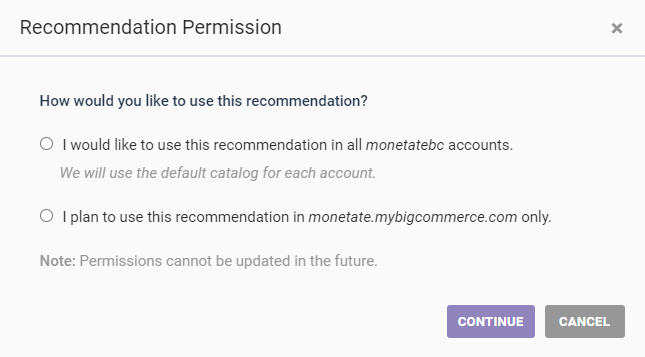
- Name the strategy. Click the placeholder title, type the name into the text field, and then click the green checkmark.
- If you're creating a local strategy and if the account has multiple product catalogs, then select one from Product Catalog.

-
Select from Recommendation Algorithm one of the algorithms that's eligible for use with offline purchases data:
- Top Selling by Purchase Count
- Top Selling by Gross Revenue
- Purchased and Also Purchased
- Trending Items by Purchase Count

- Select either Offline purchases only or Online and offline purchases from Including.
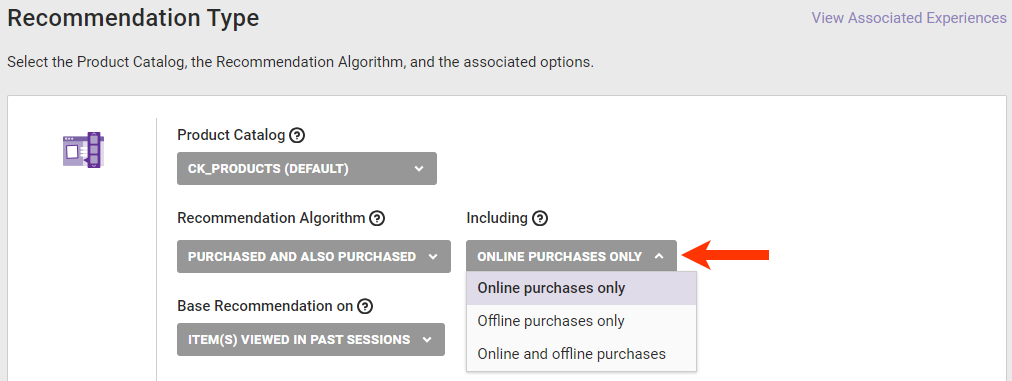
-
If you selected Purchased and Also Purchased in step 6, then select from Base Recommendation on the type of customer behavior or other context on which to base the recommendations.

- If you selected Item(s) purchased in previous sessions or Last item purchased in any session in step 8 and if Offline Purchases Data is set as the default on the Global Settings tab, then select an option from Data Includes:
- Online purchases only — Offline purchases aren't included in the customer purchase history
- Online and offline purchases — Offline purchases along with online purchases are included in the customer purchase history
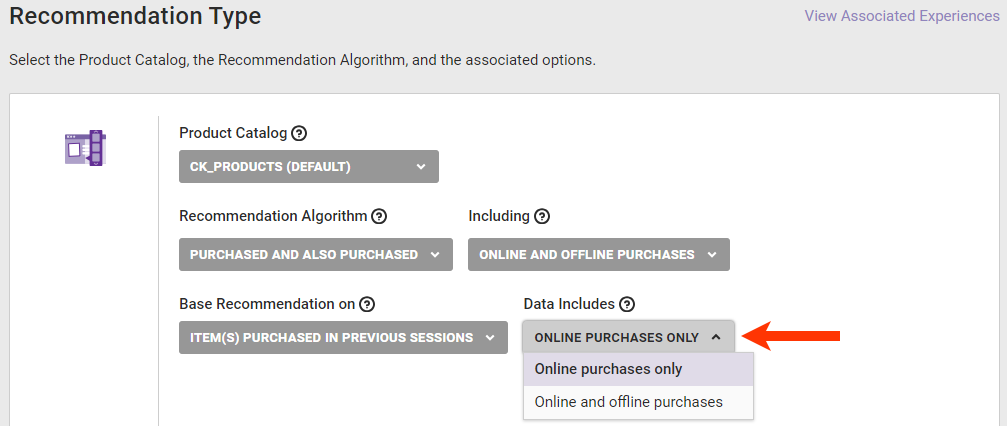
- If you selected Purchased and Also Purchased in step 6, then optionally toggle Prepend context item in recommendation to YES if you want the product on which the recommendation results are based to appear at the beginning of the recommendation results.
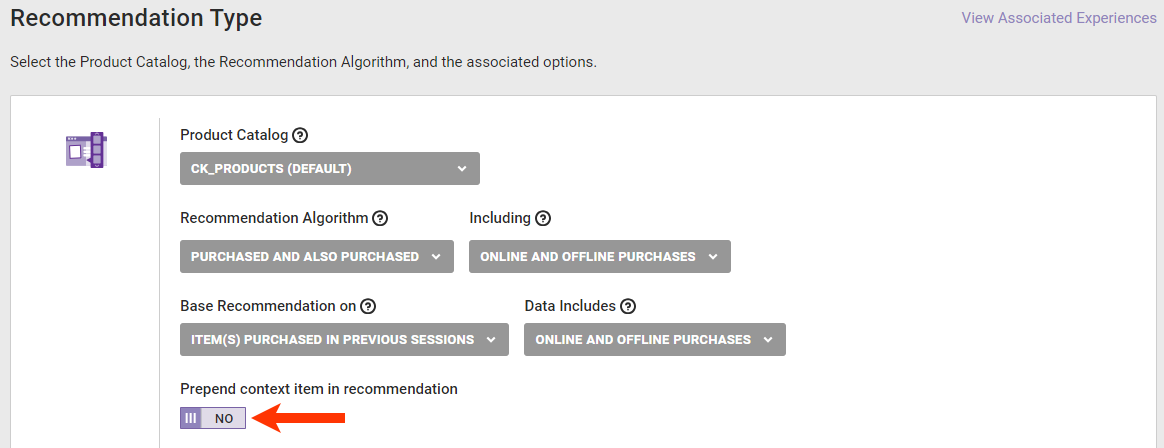
- If you selected Item group ID(s) in custom variable in step 8, then type into Custom Variable a custom variable that your site passes to Monetate using either the
setCustomVariablesmethod call in the Monetate API implementation ormonetate:context:CustomVariablesin the Engine API implementation.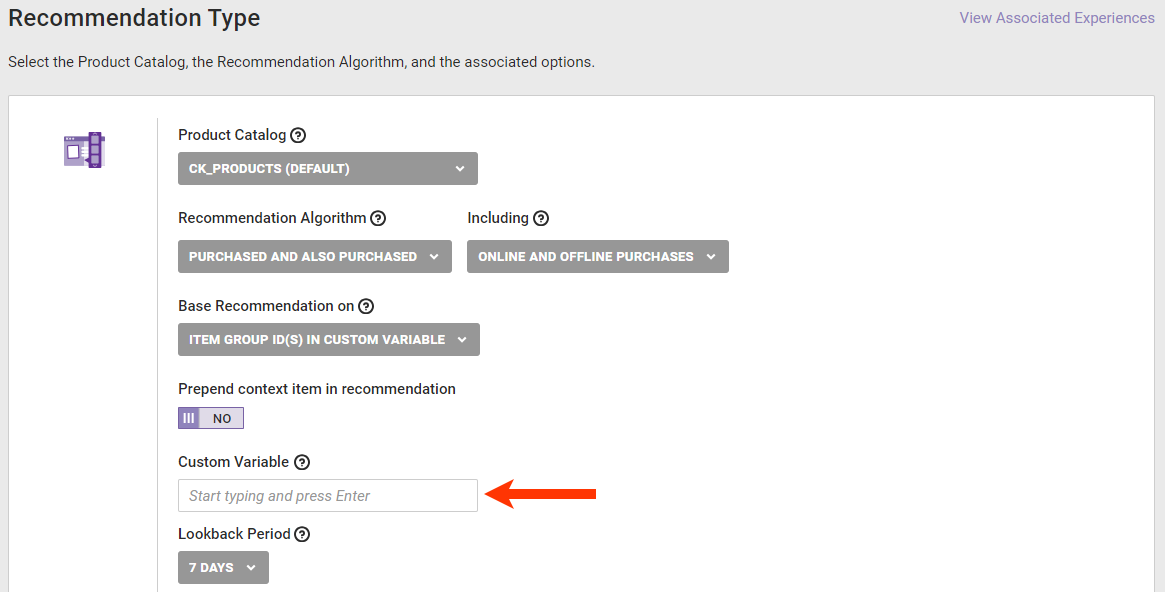
- If you selected any recommendation algorithm except for Trending Items by Purchase Count in step 6, then select an option from Lookback Period to set how much historical data the strategy considers when calculating results.
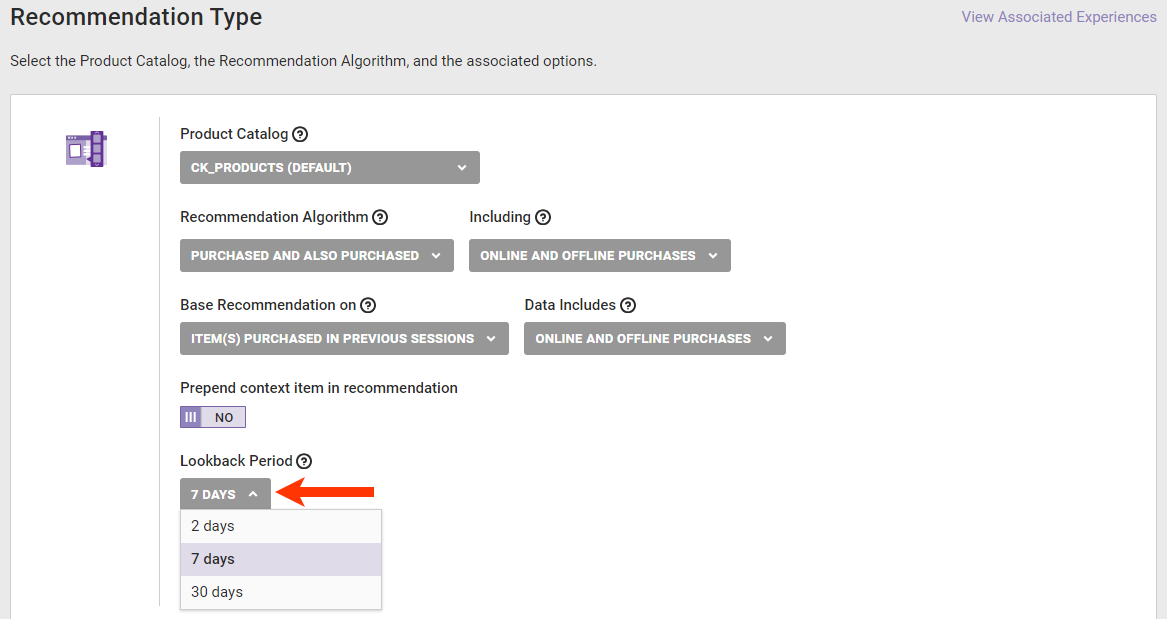
- If you selected Top Selling by Purchase Count or Top Selling by Gross Revenue in step 6, then optionally select an option from Geographic Targeting if you want the strategy to also consider the customer's location to populate the recommendations:
- Country targeting — Only products relevant to the customer's country are recommended
- Region targeting — Only products relevant to the customer's region, as defined in MaxMind's GeoIP2 database, are recommended
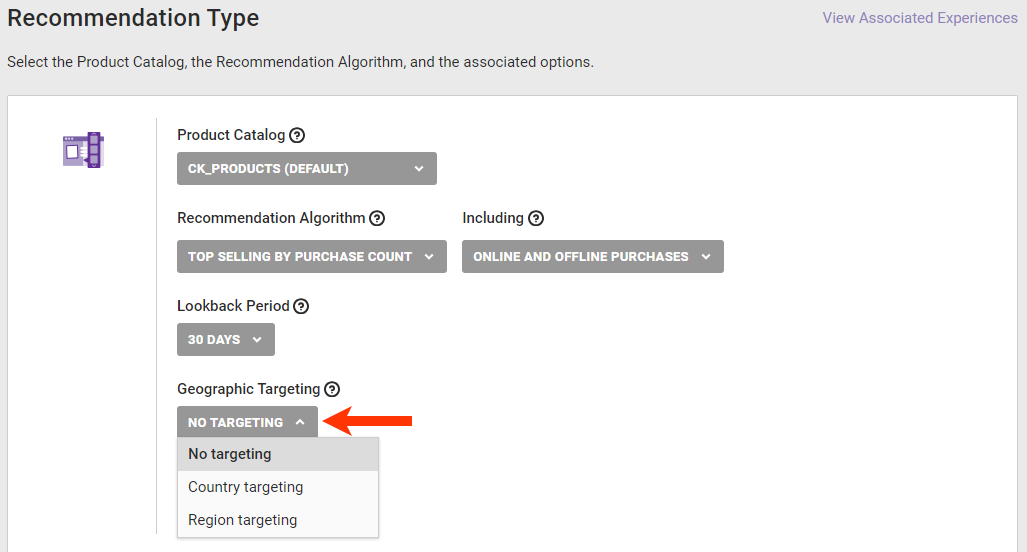
- Optionally, toggle Randomize Results to YES if you want the order in which recommended products appear in the slider to be less systematized. See Product Recommendations Overview for more information about how this setting works.
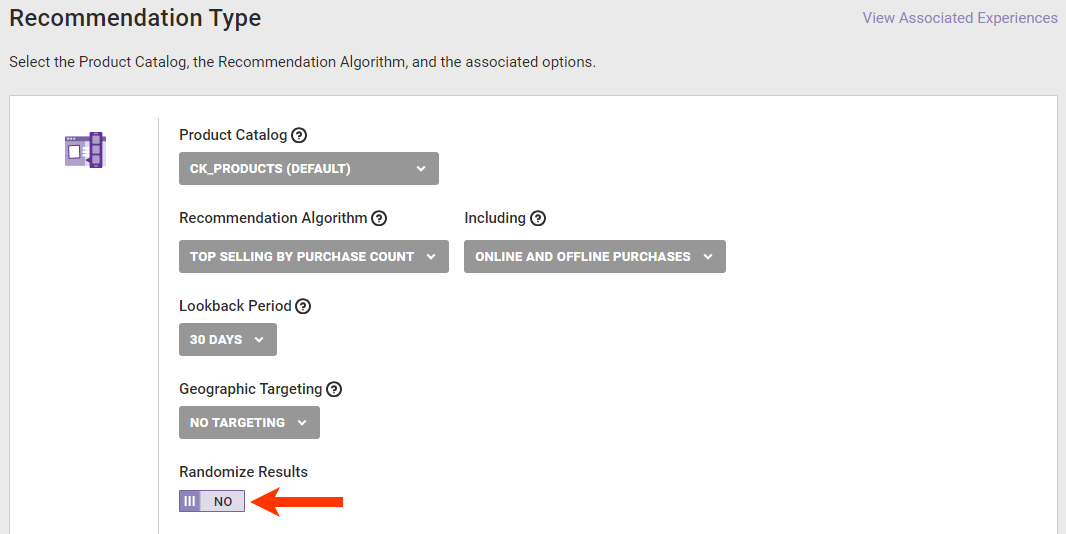
- To further refine the recommendations results, click ADD FILTER, select an option from SELECT ATTRIBUTE, and then complete the filter equation. Repeat this step as necessary to add as many recommendation filters as you believe the strategy needs. See Excluding Previously Purchased Products from Results in this documentation if you want to ensure results don't include items the customer has already bought.
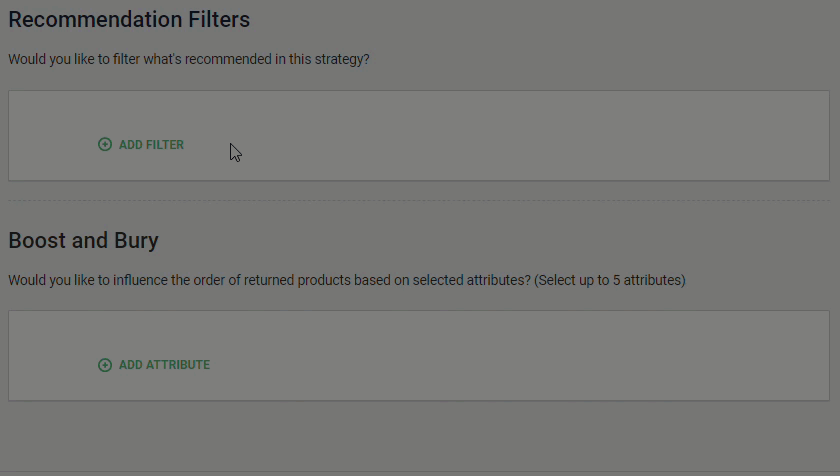
- Optionally, configure up to five Boost and Bury filters to influence if recommended products that meet that filtering criteria are more likely (boost) or less likely (bury) to appear for the customer. See Boost and Bury for more information.

- Click SAVE.

Excluding Previously Purchased Products from Results
Follow these steps to create a recommendation filter that specifically excludes previous purchases from the recommendations results.
- Click ADD FILTER, and then select either Item Group ID (Product ID) or ID (SKU) from SELECT ATTRIBUTE.

- Select ≠ does not equal for the operator.
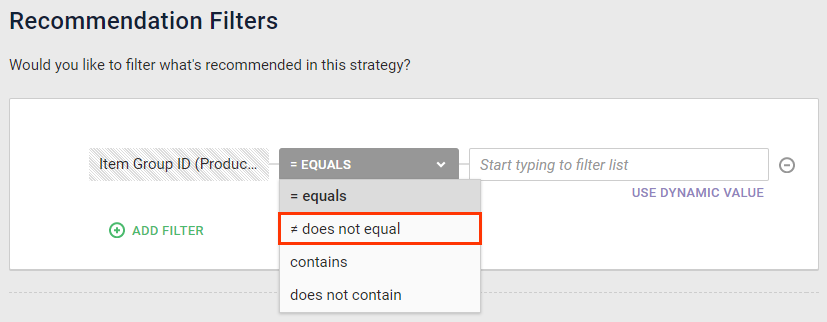
- Click USE DYNAMIC VALUE.

- Select [attribute] of a Previously Purchased Product.

This filter configuration excludes from the recommendations results both products purchased online and products purchased in store that appear in the designated Offline Purchases dataset.